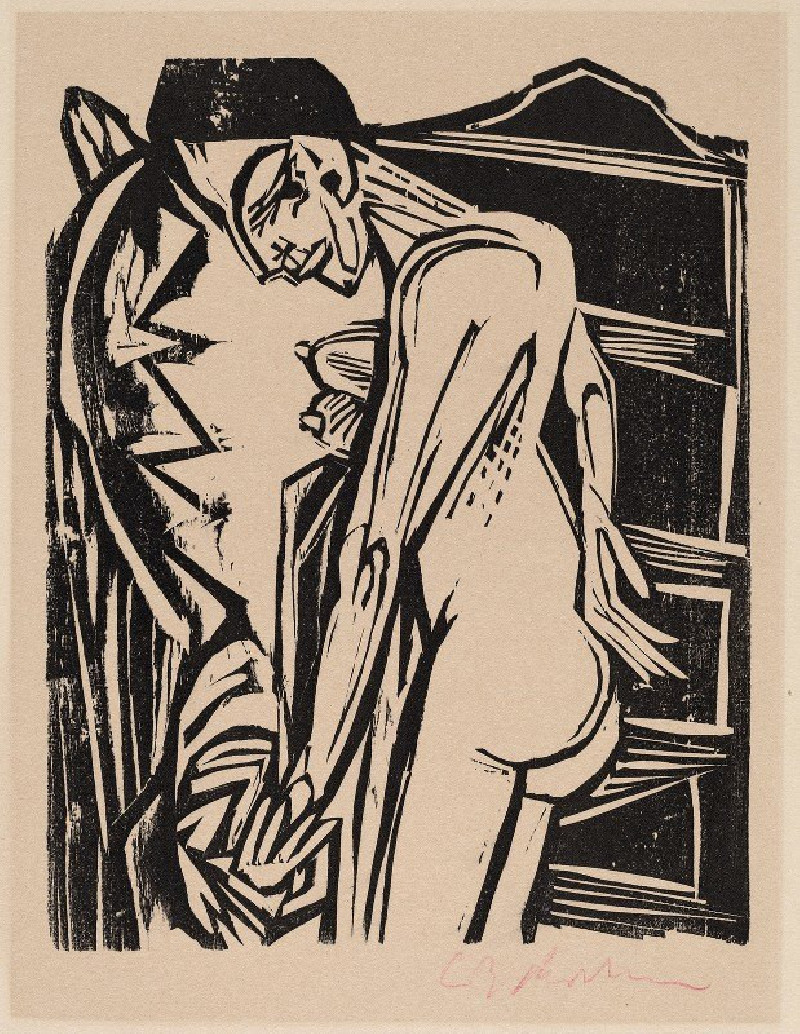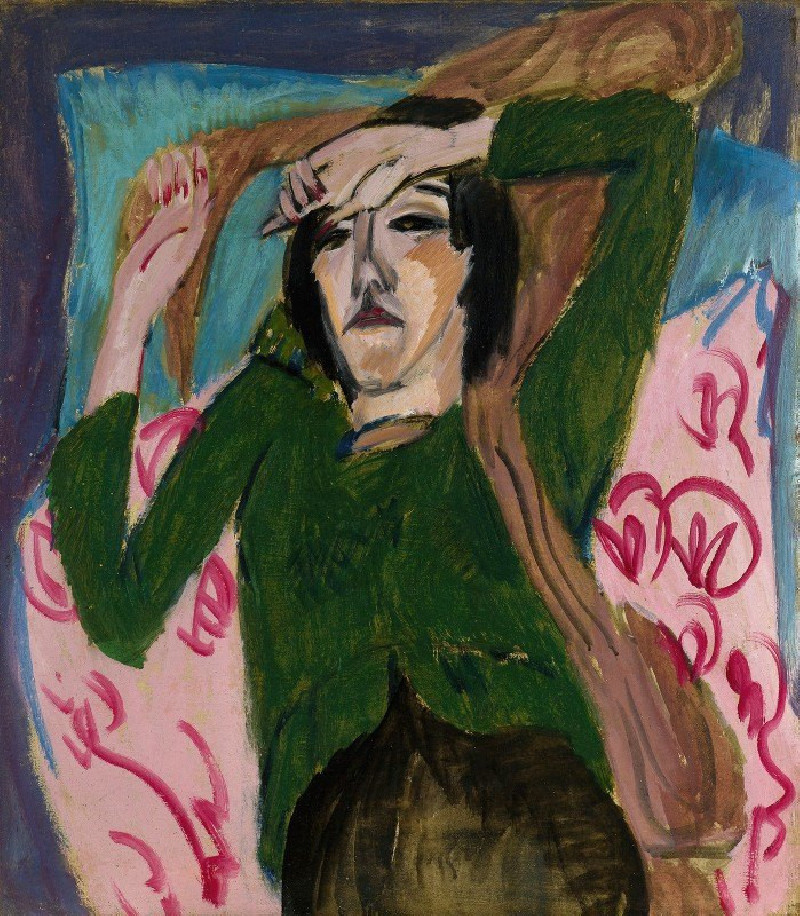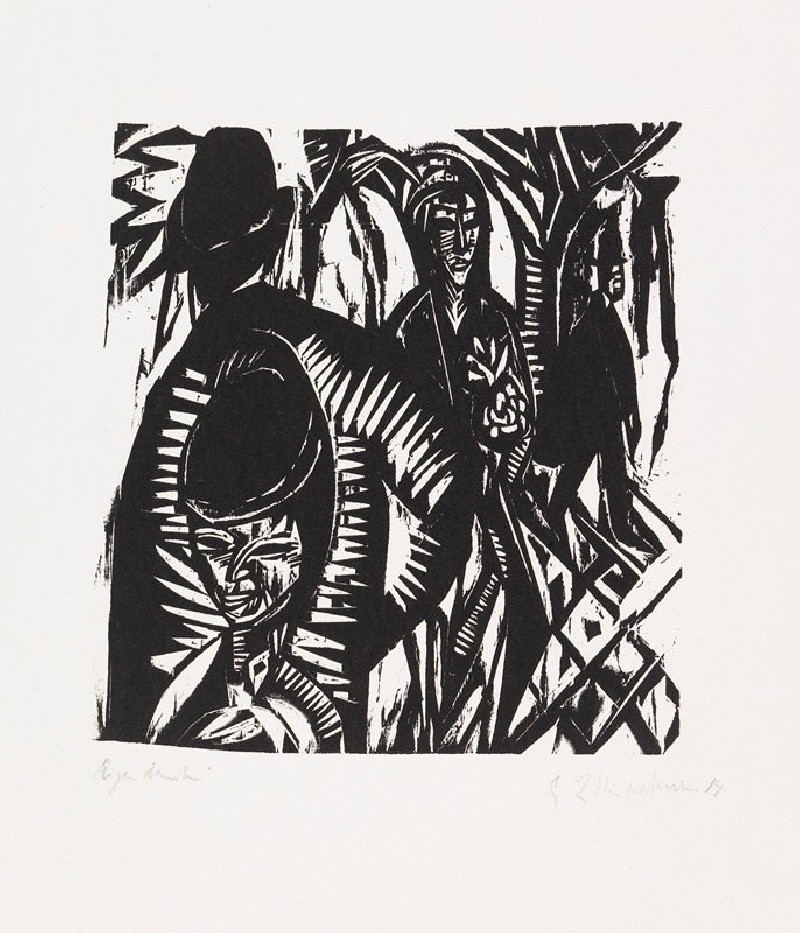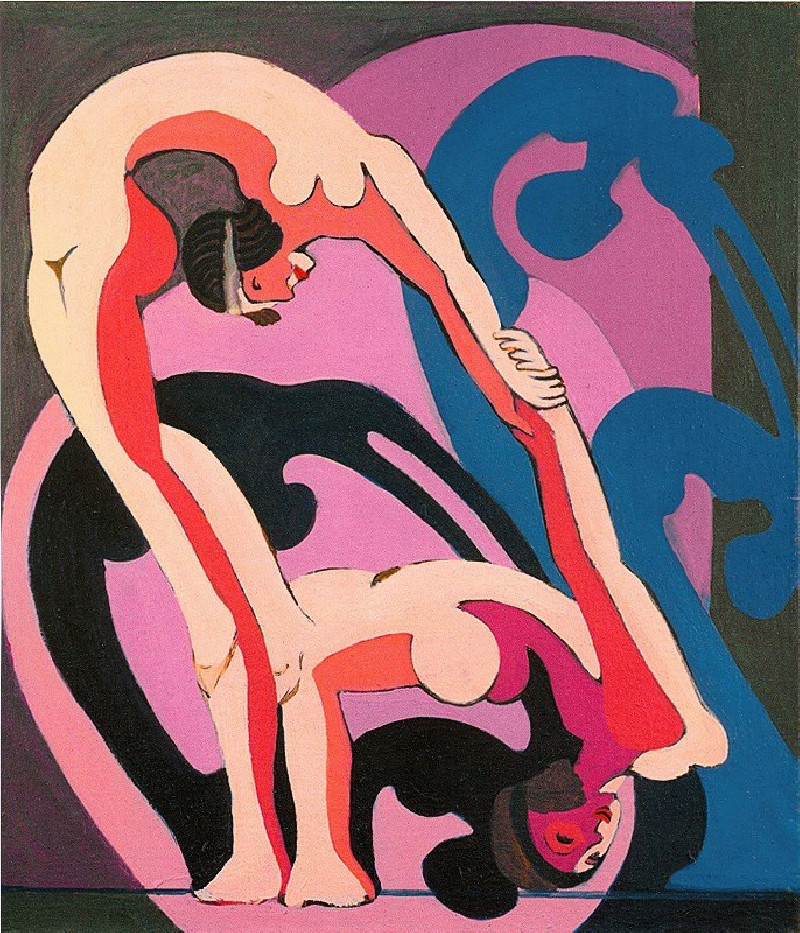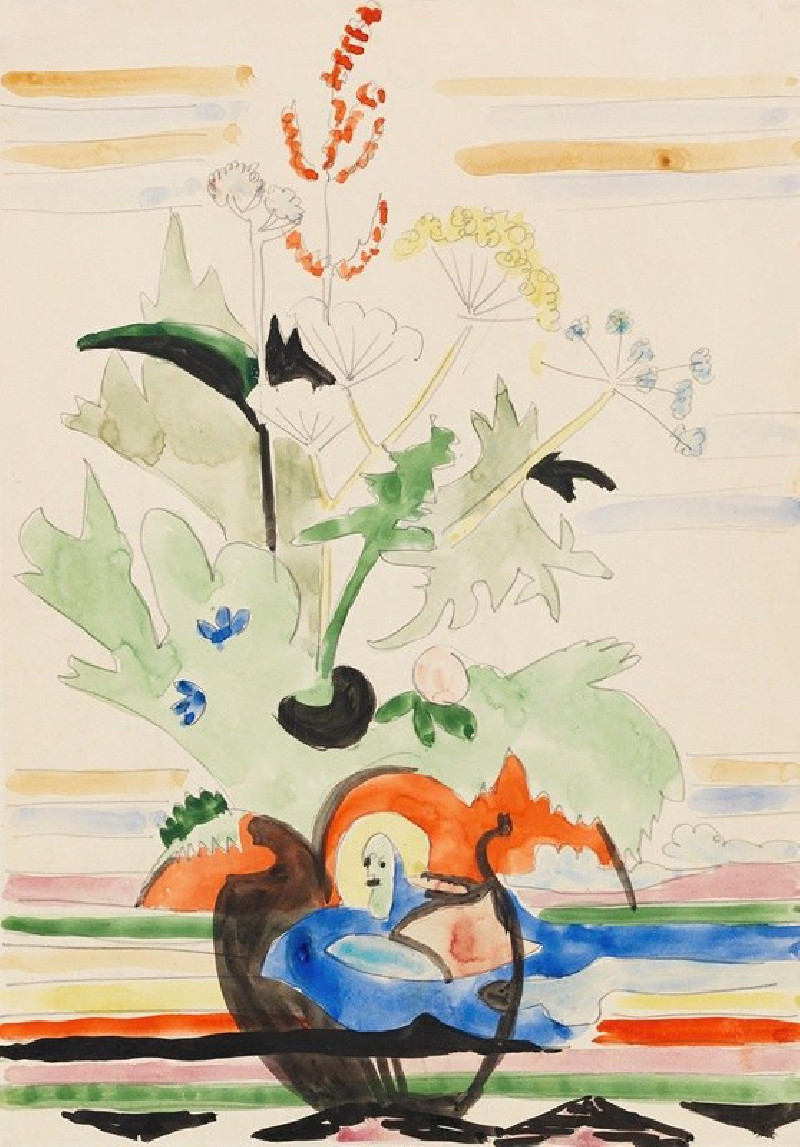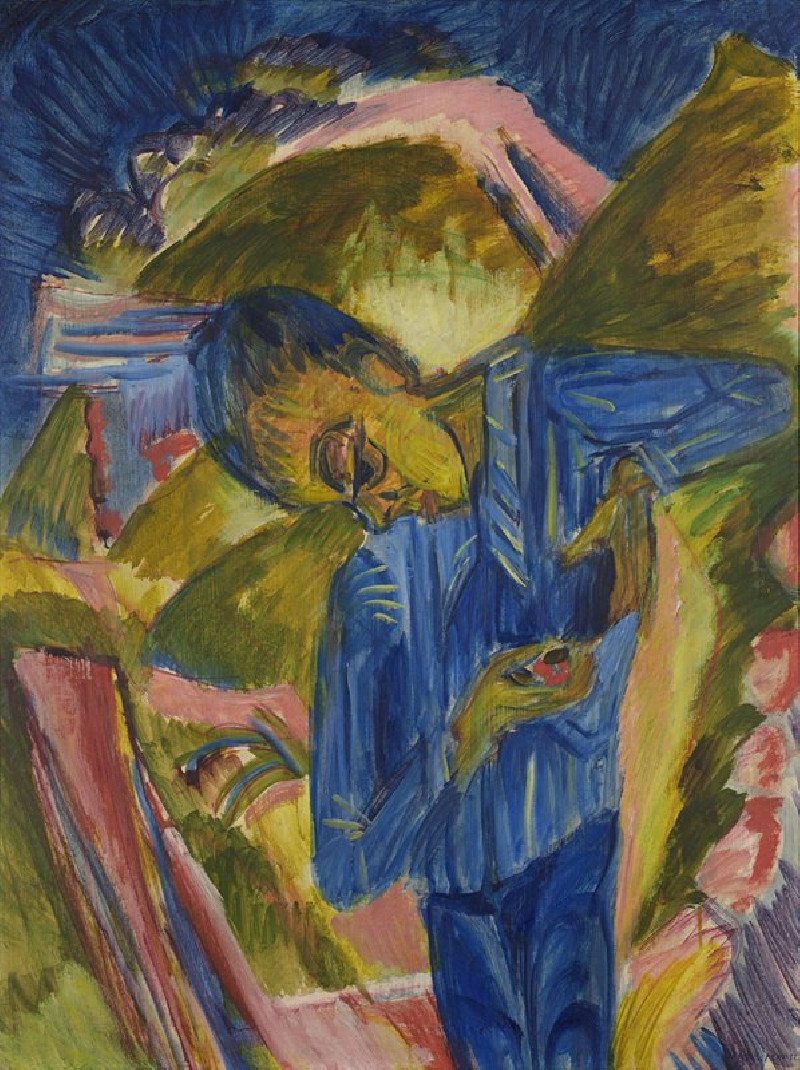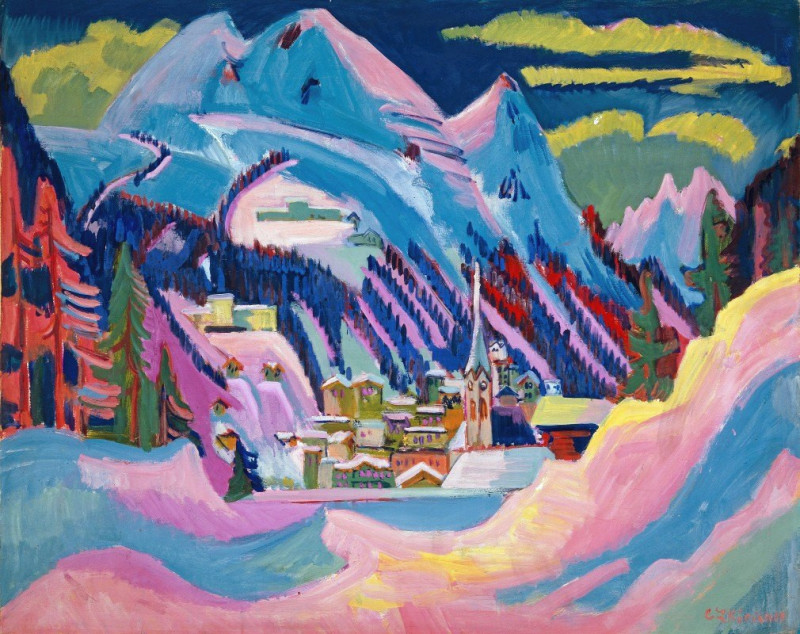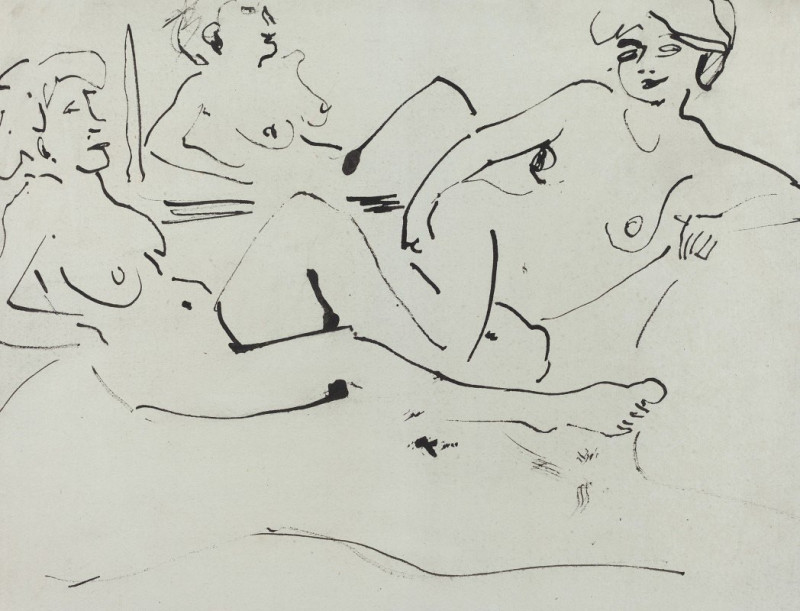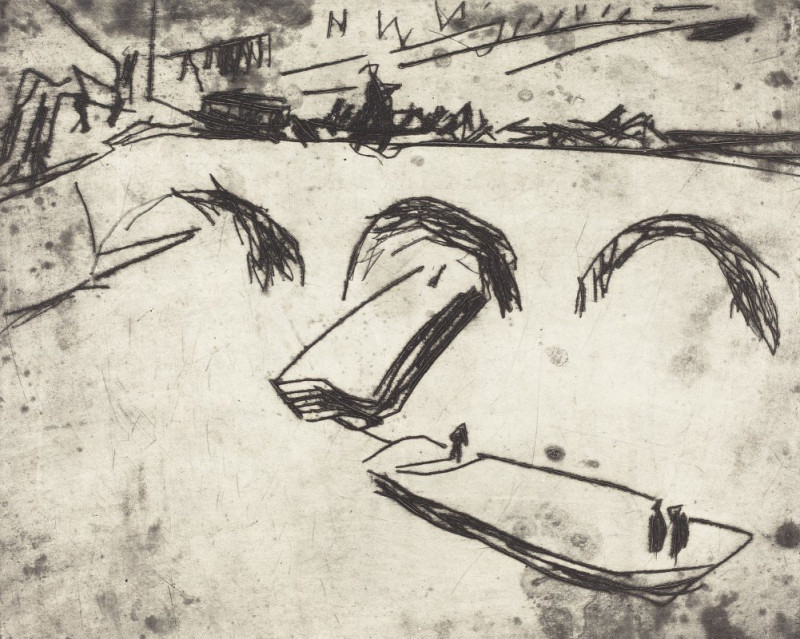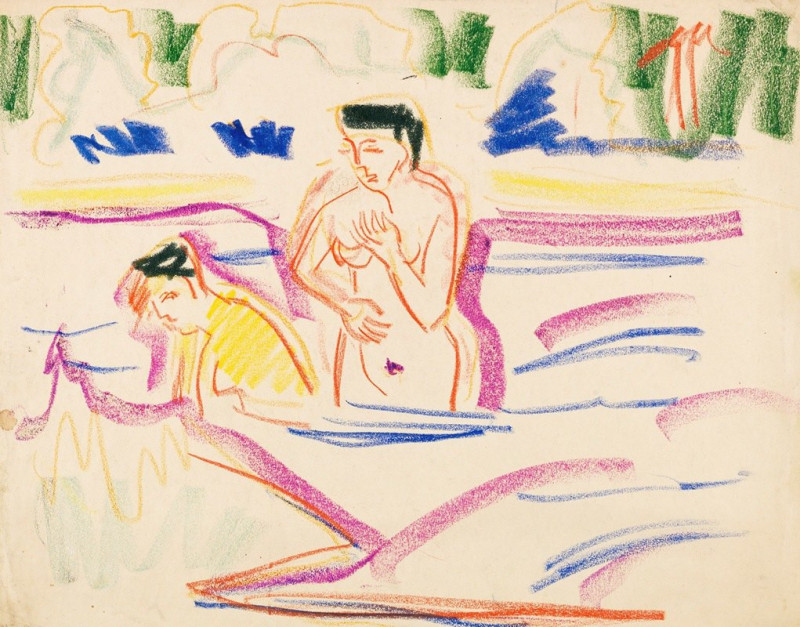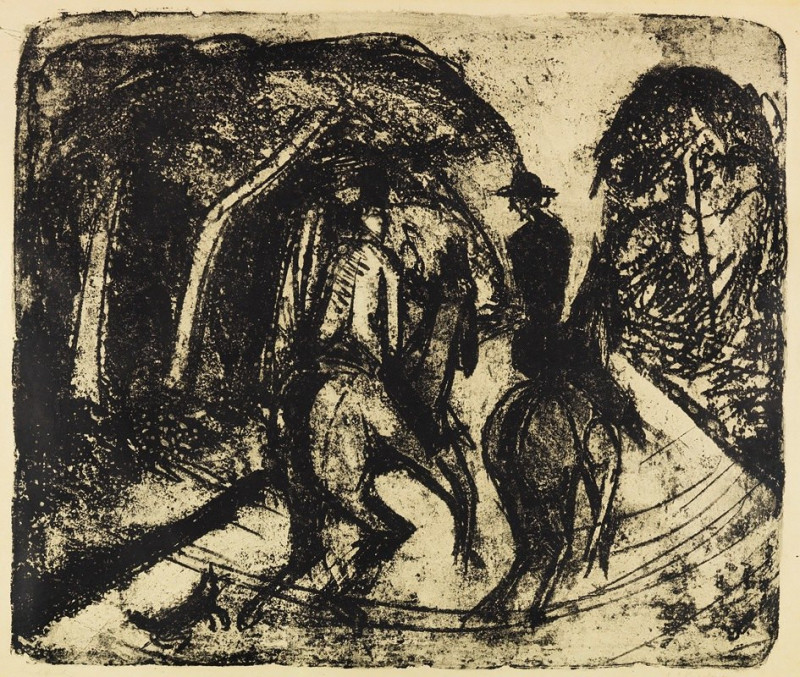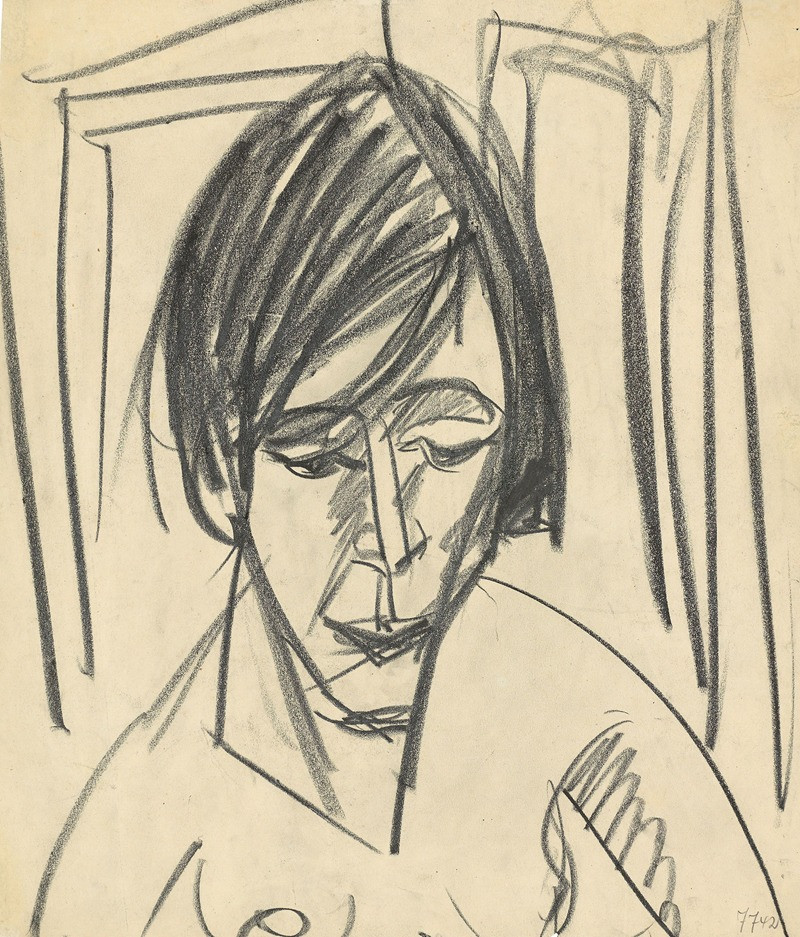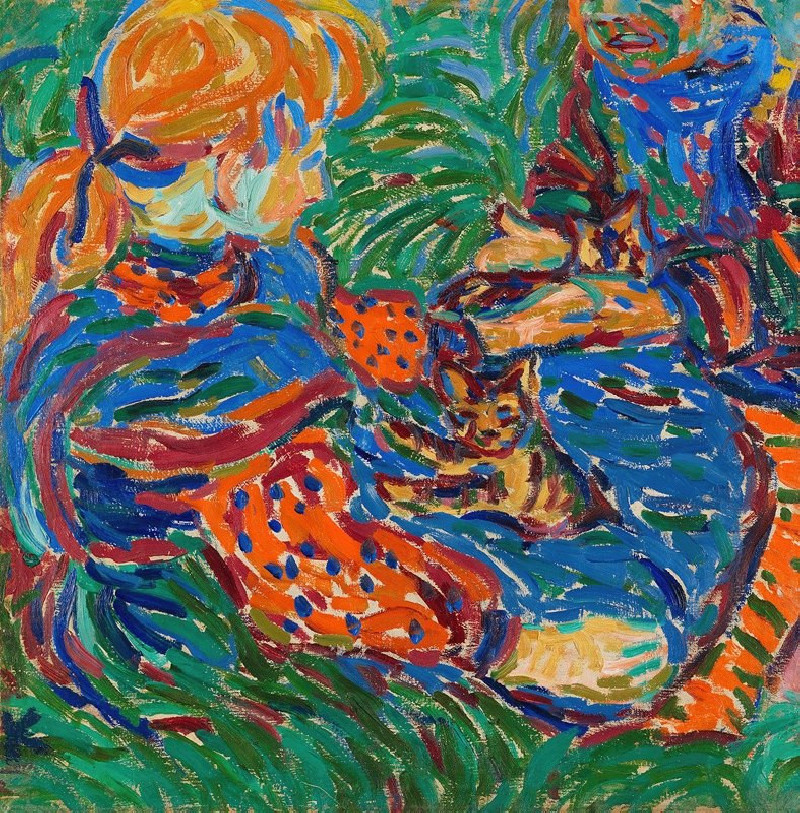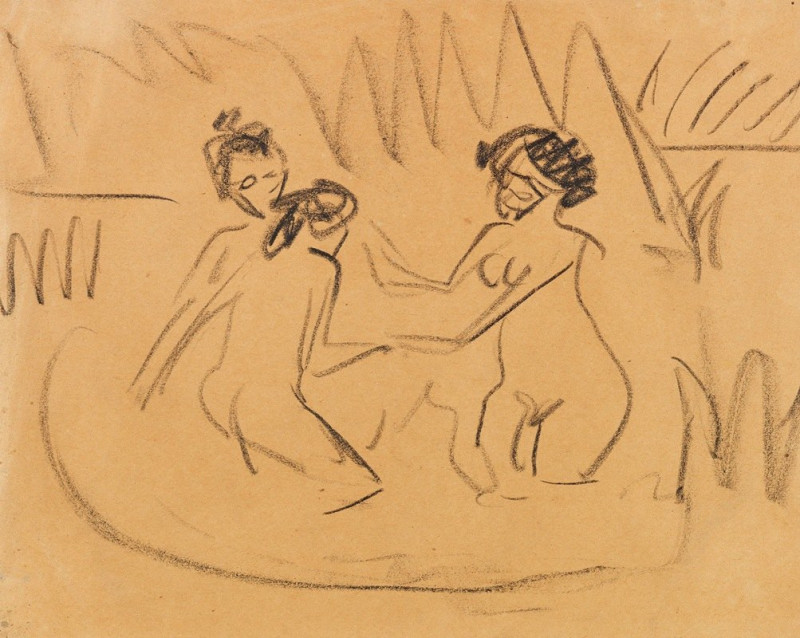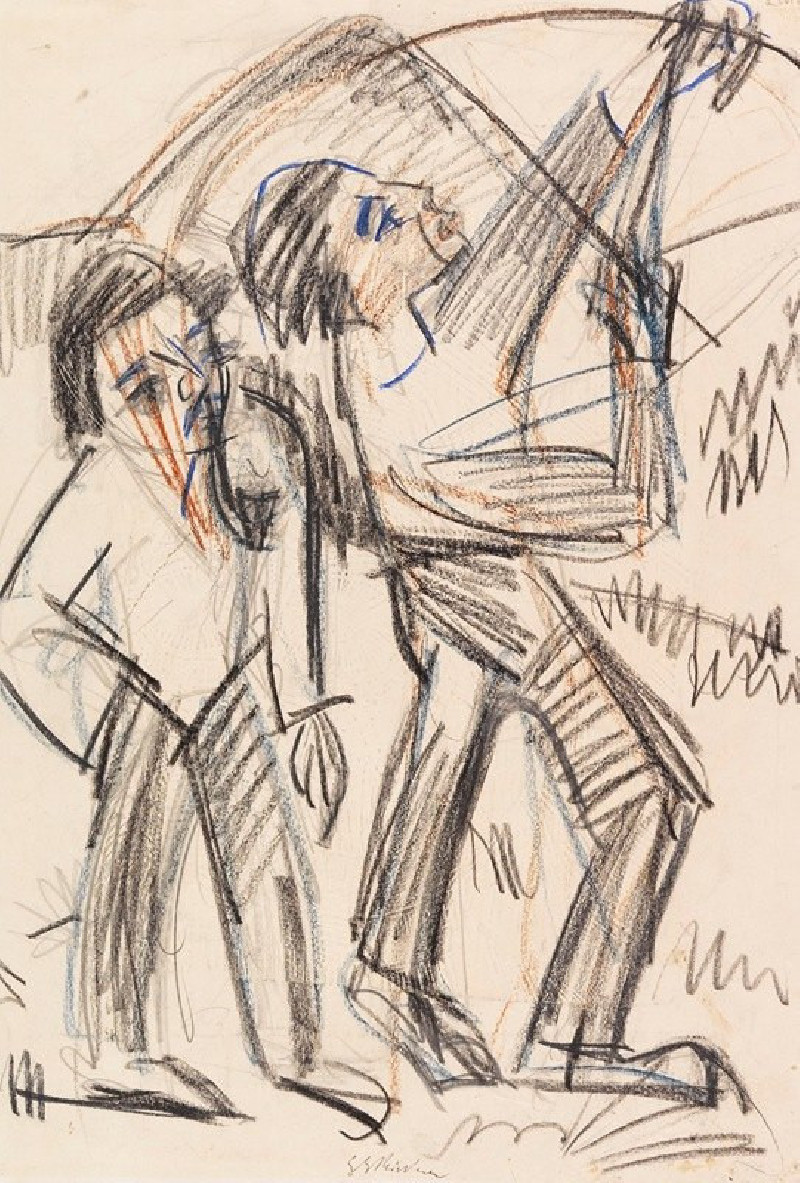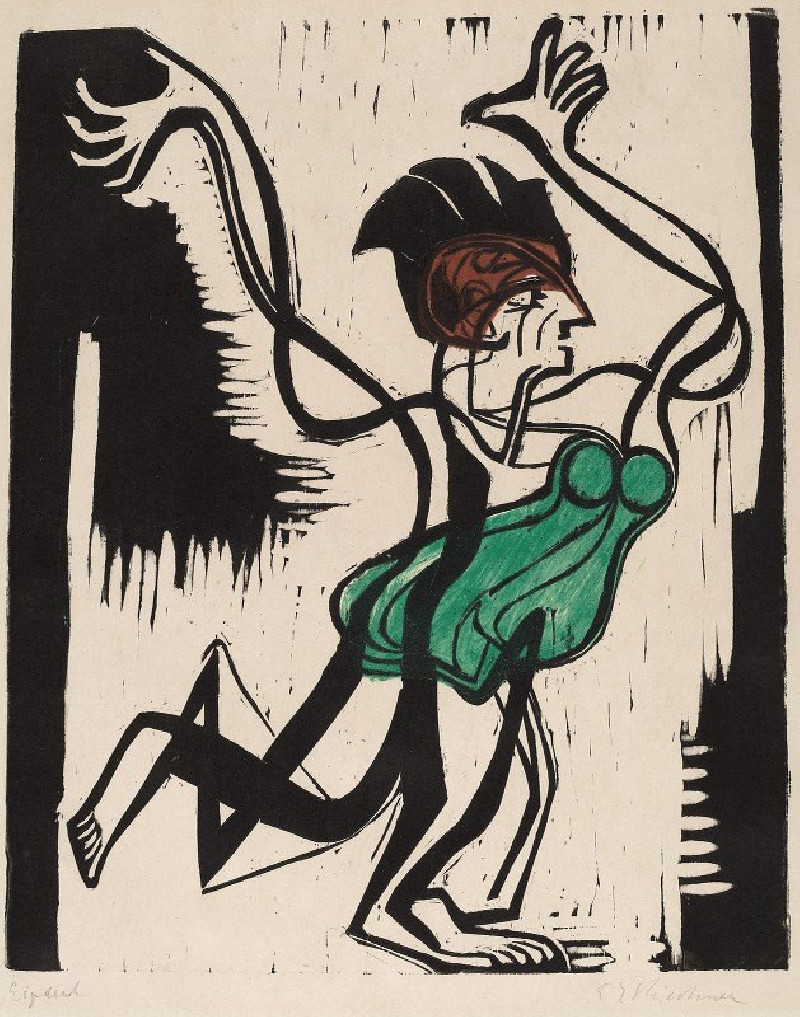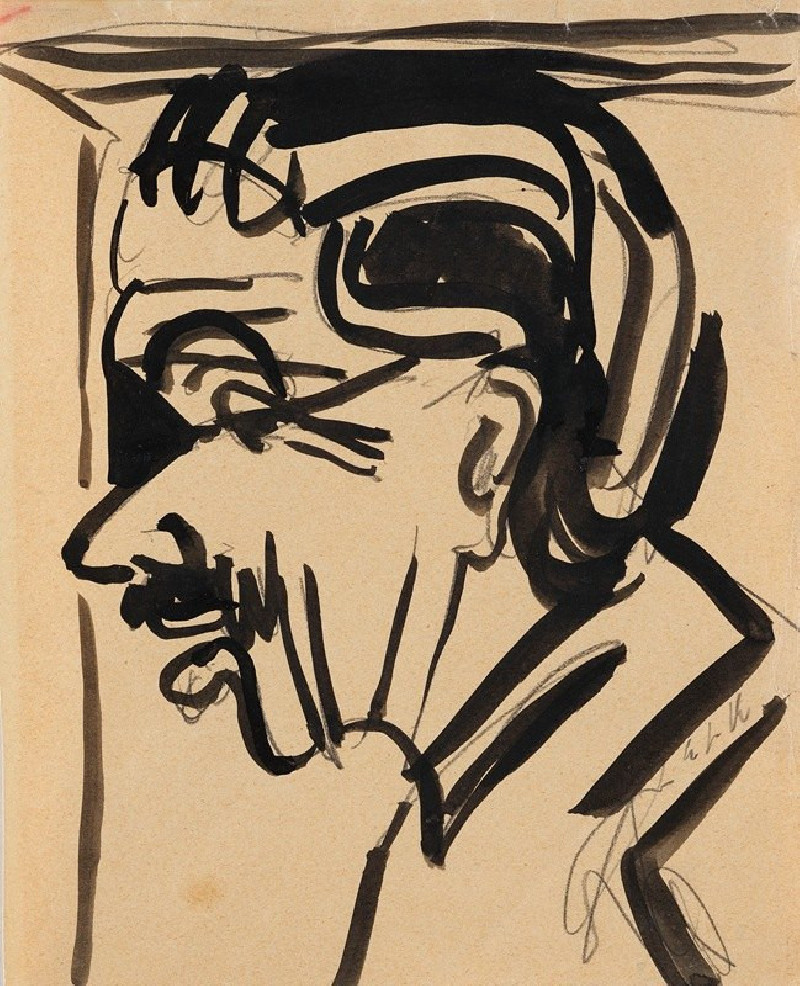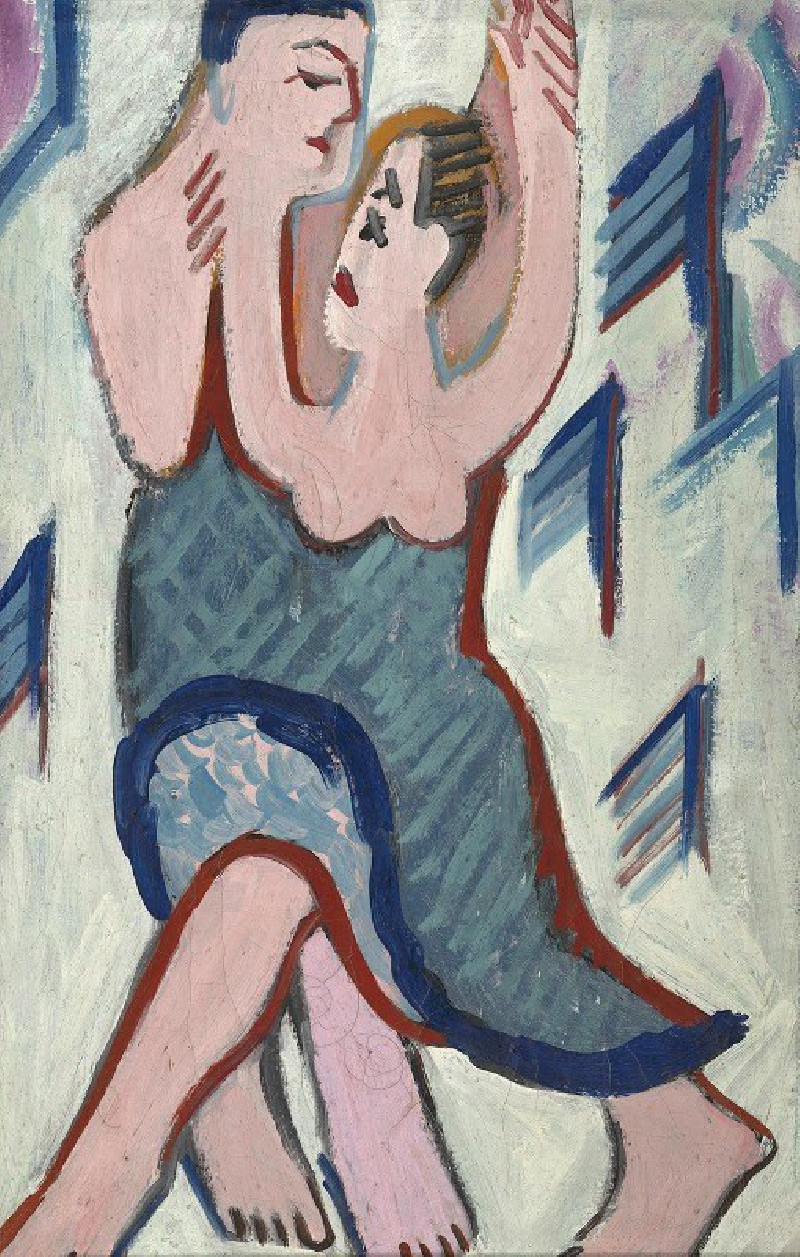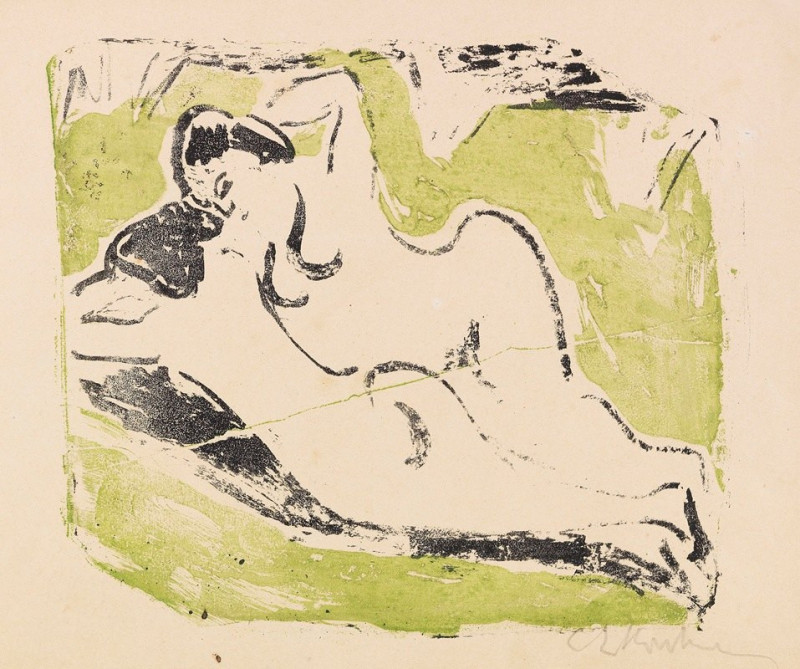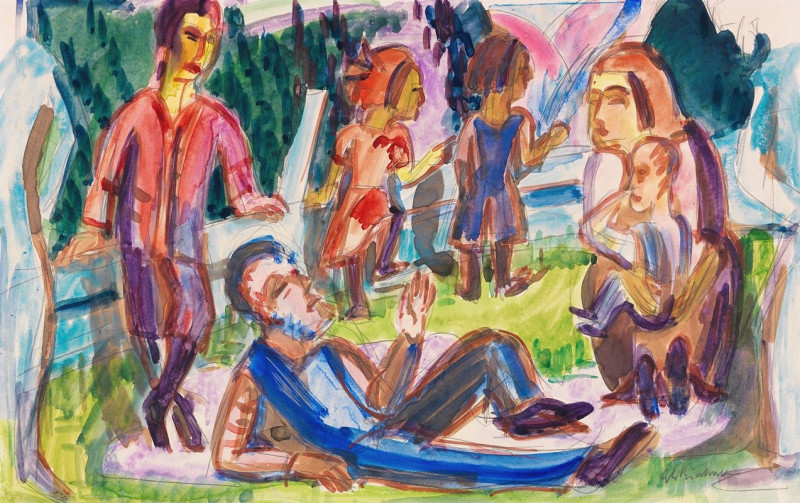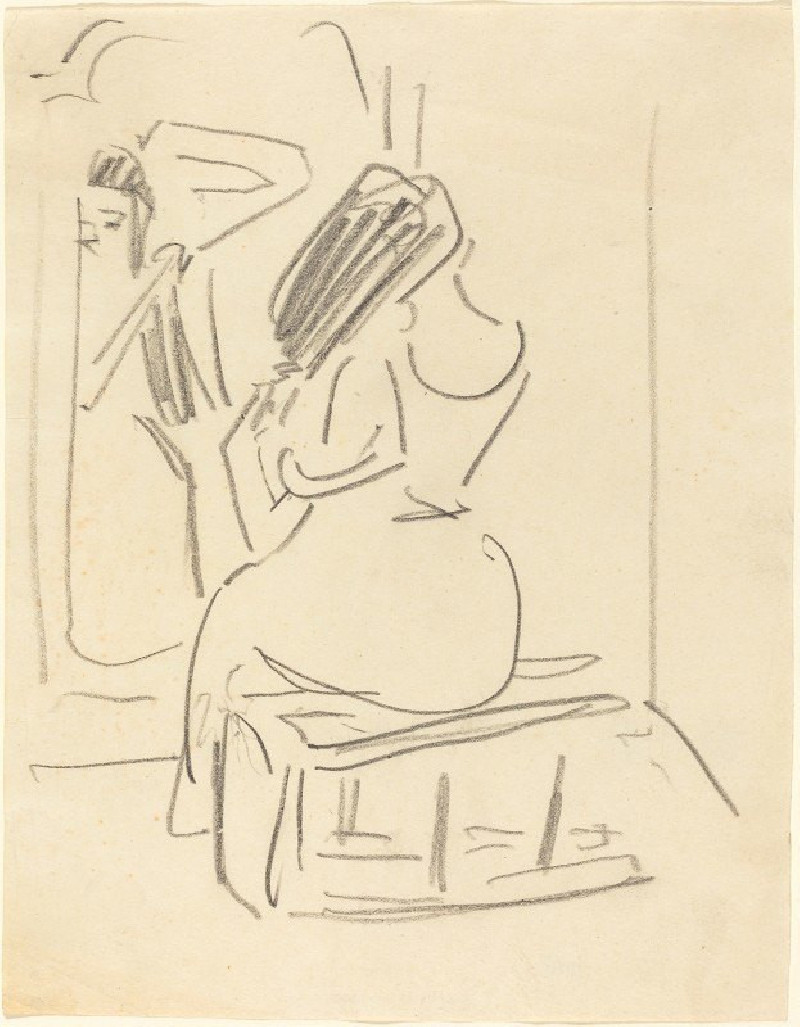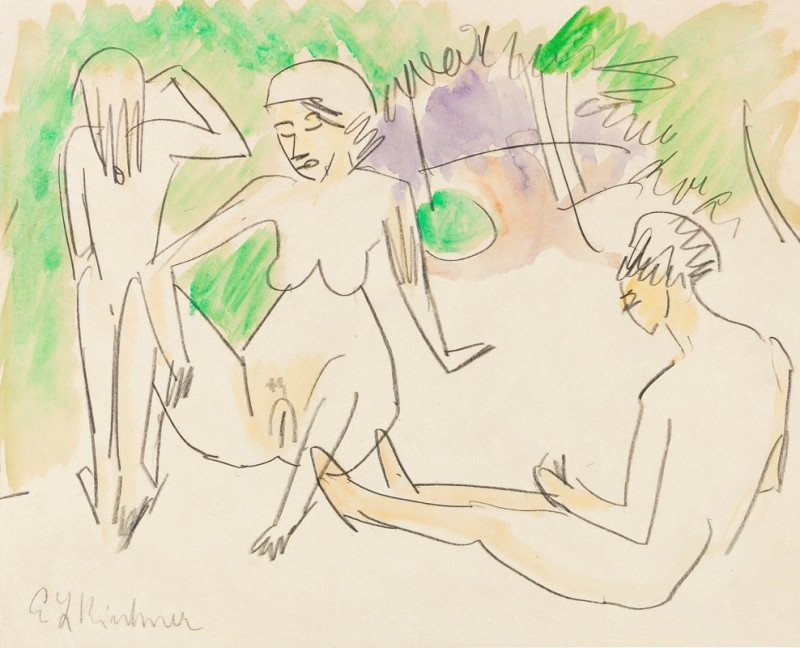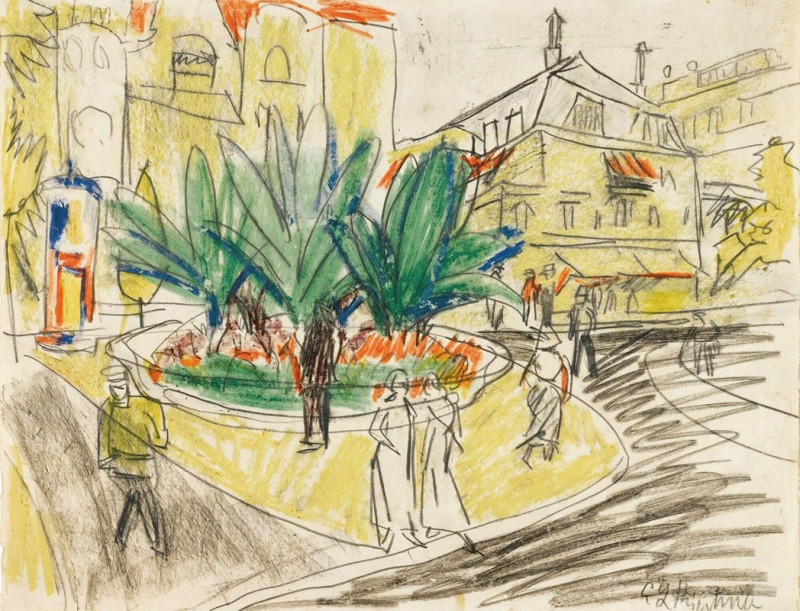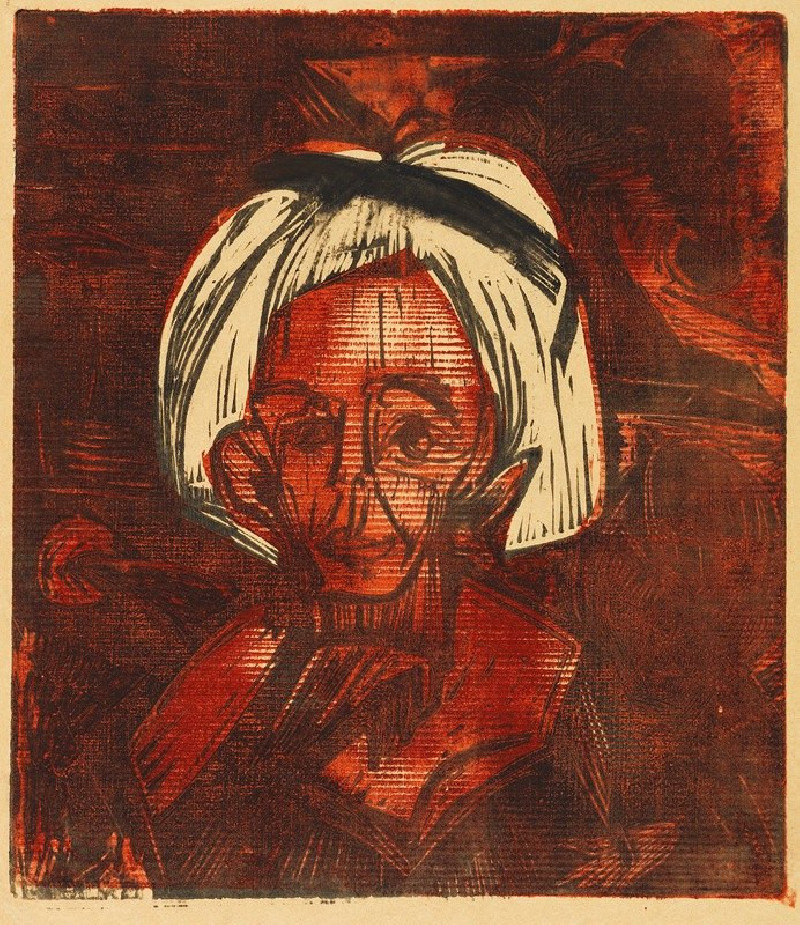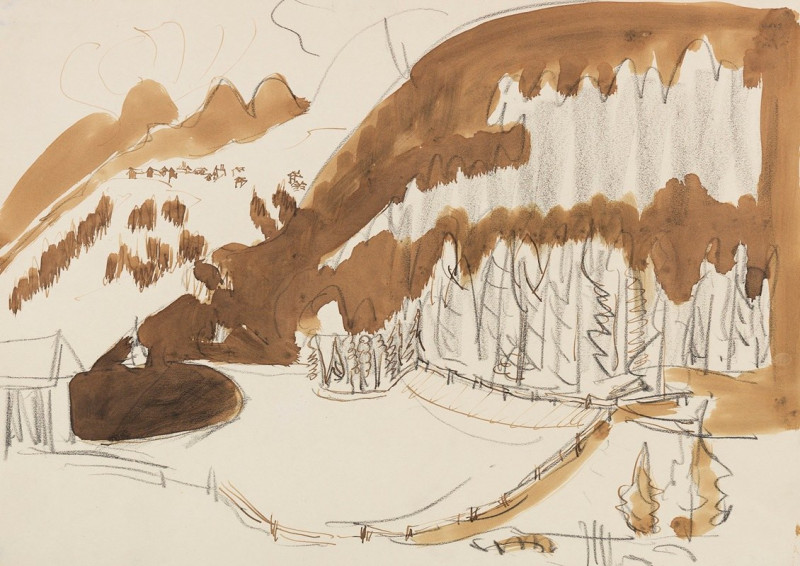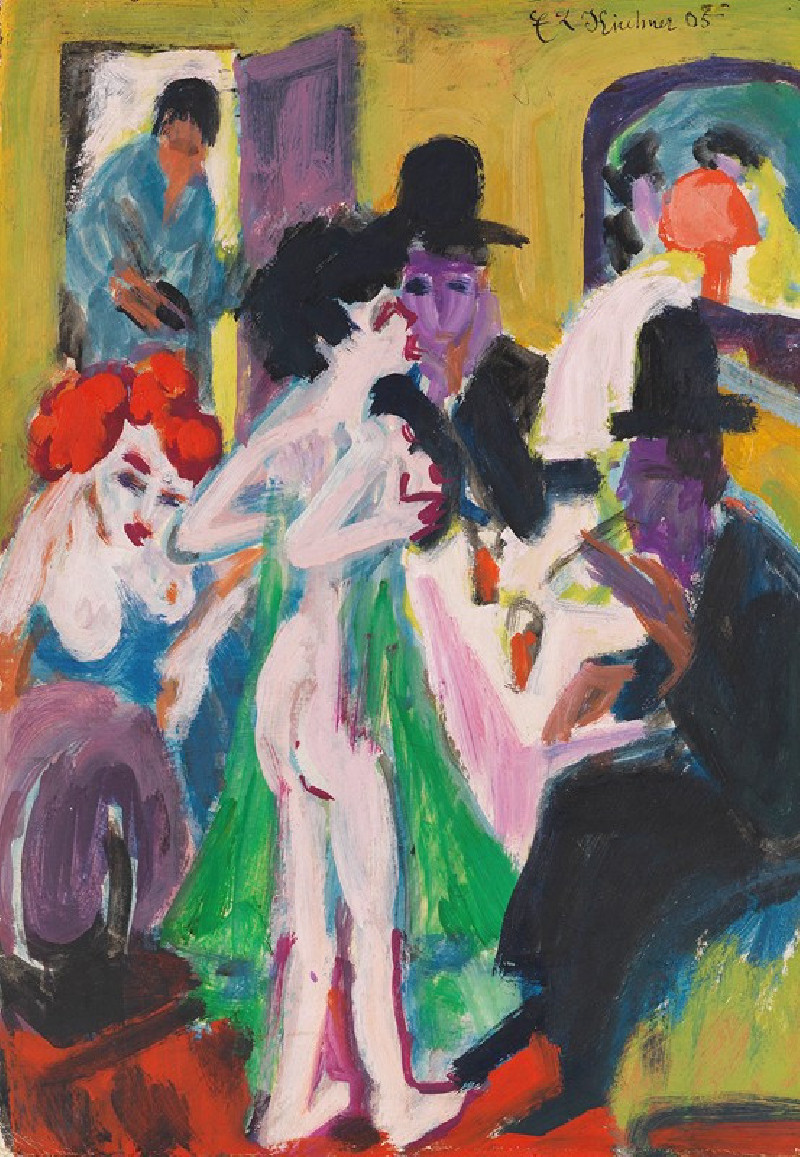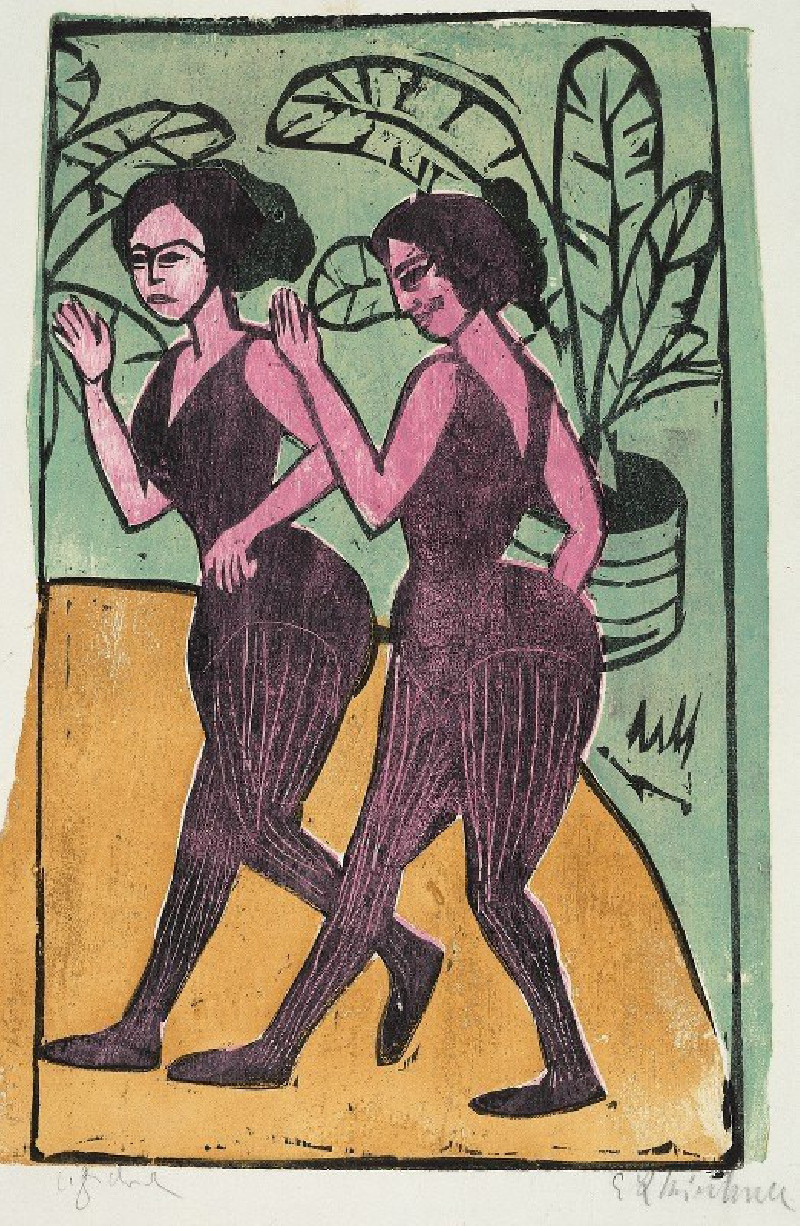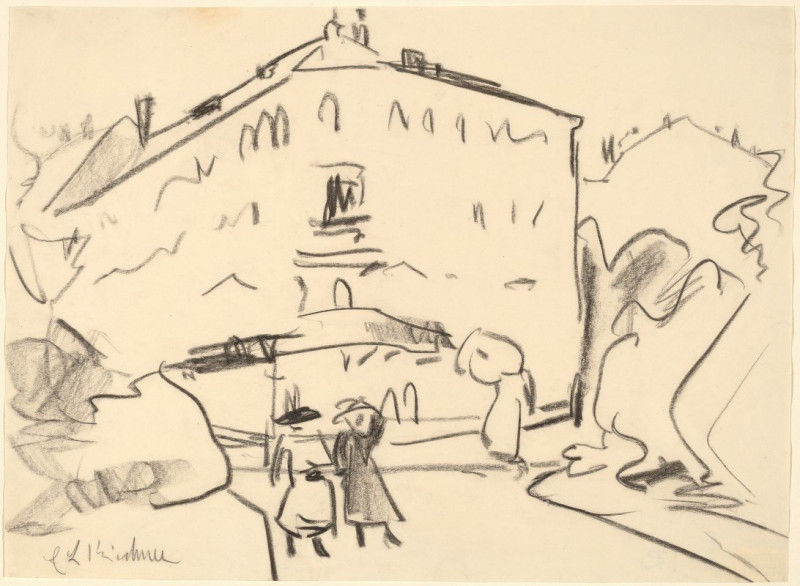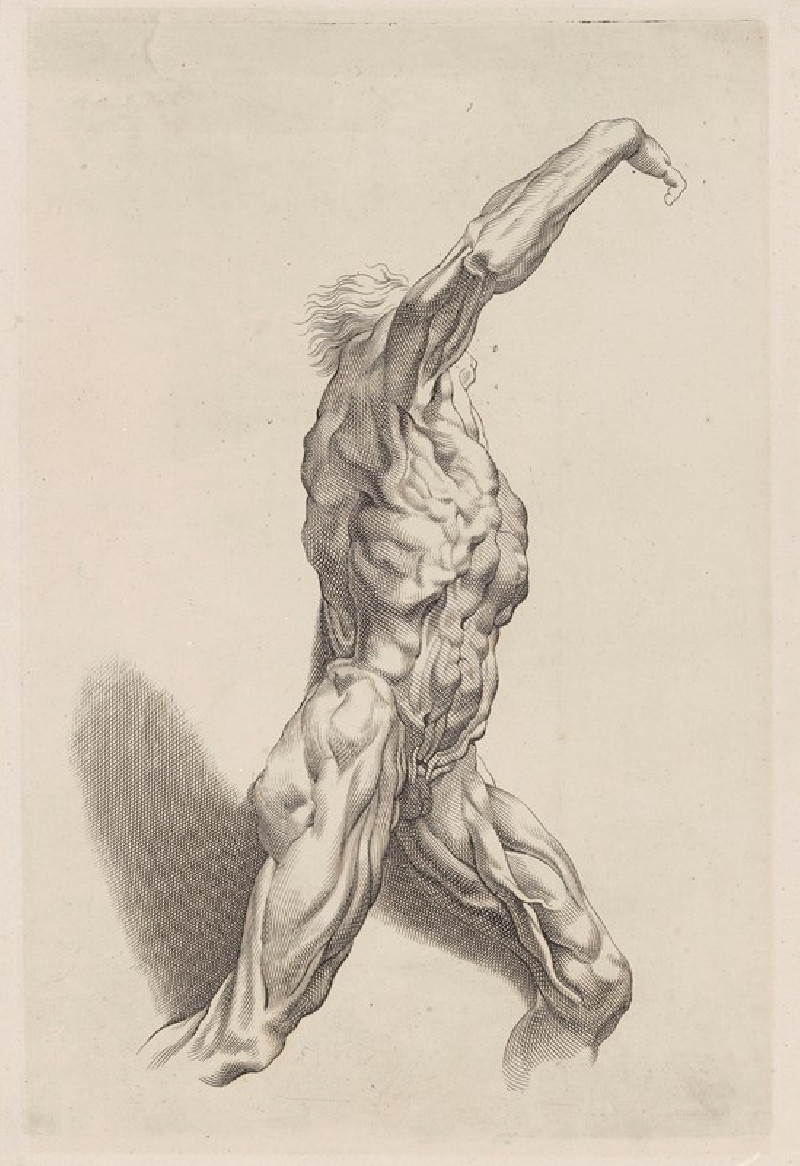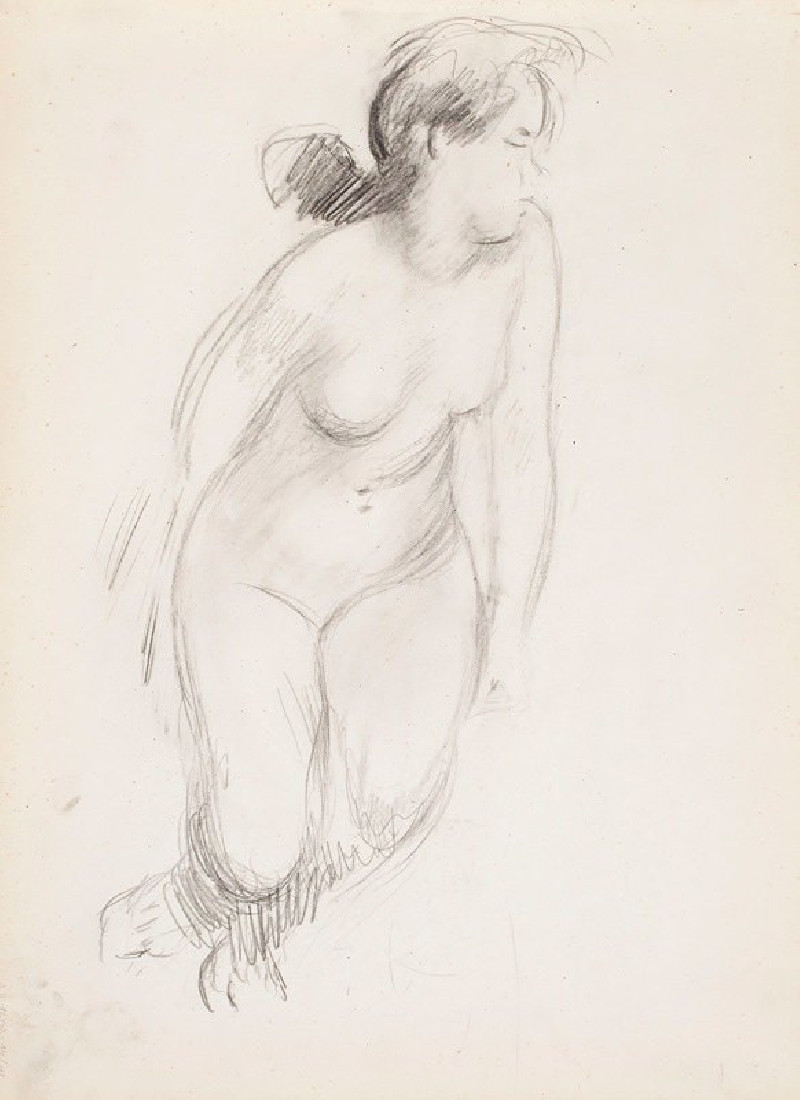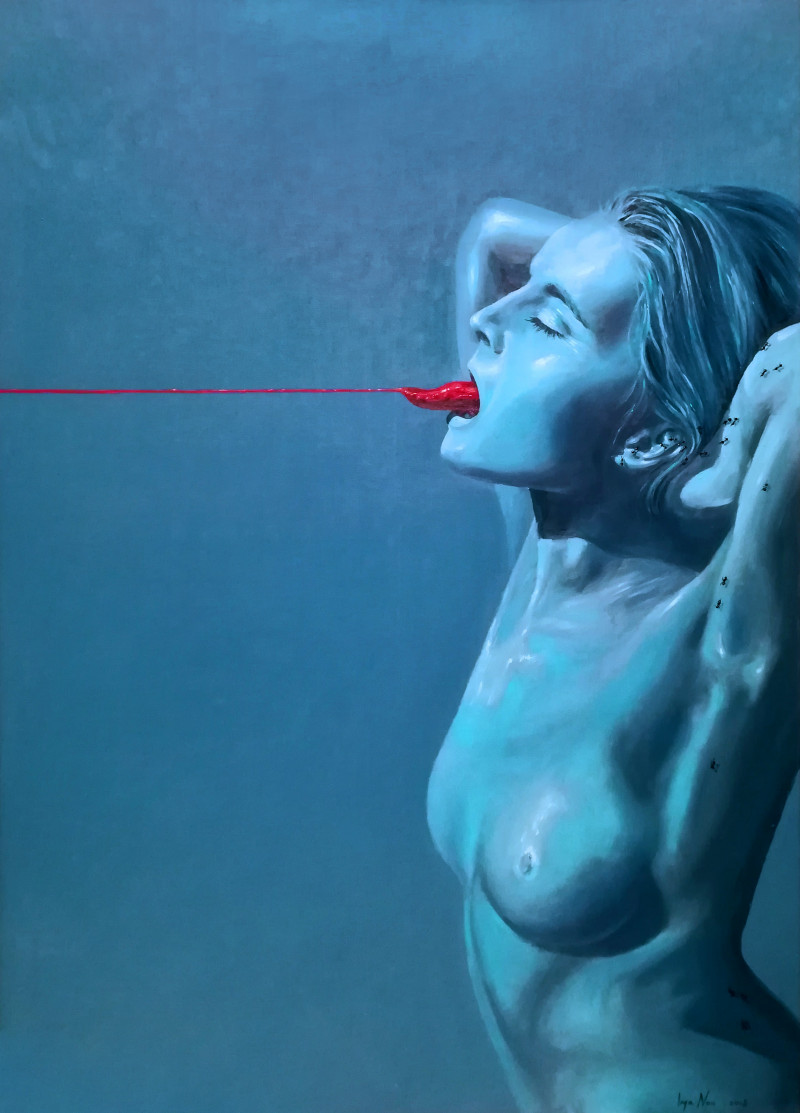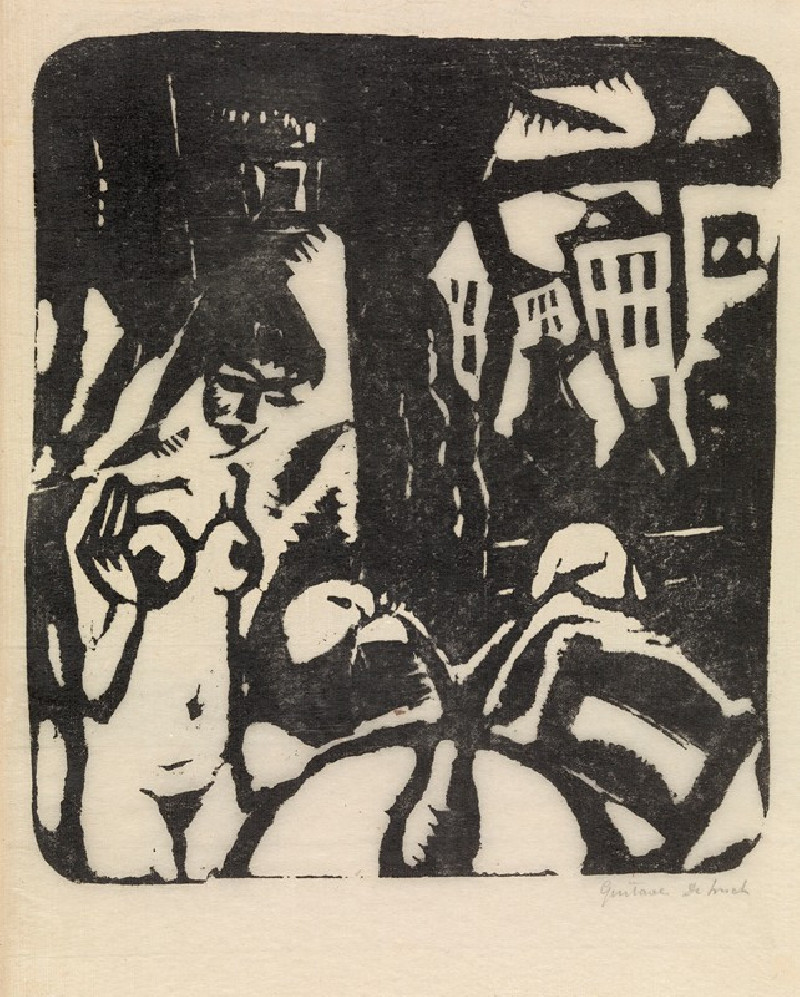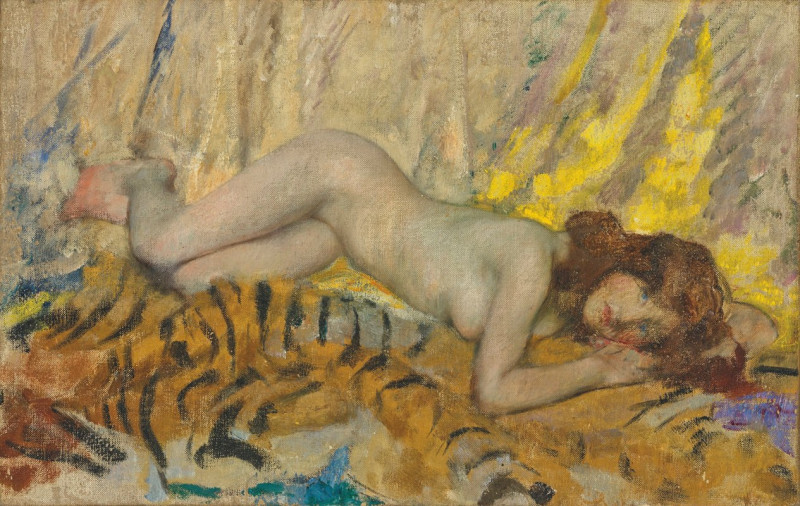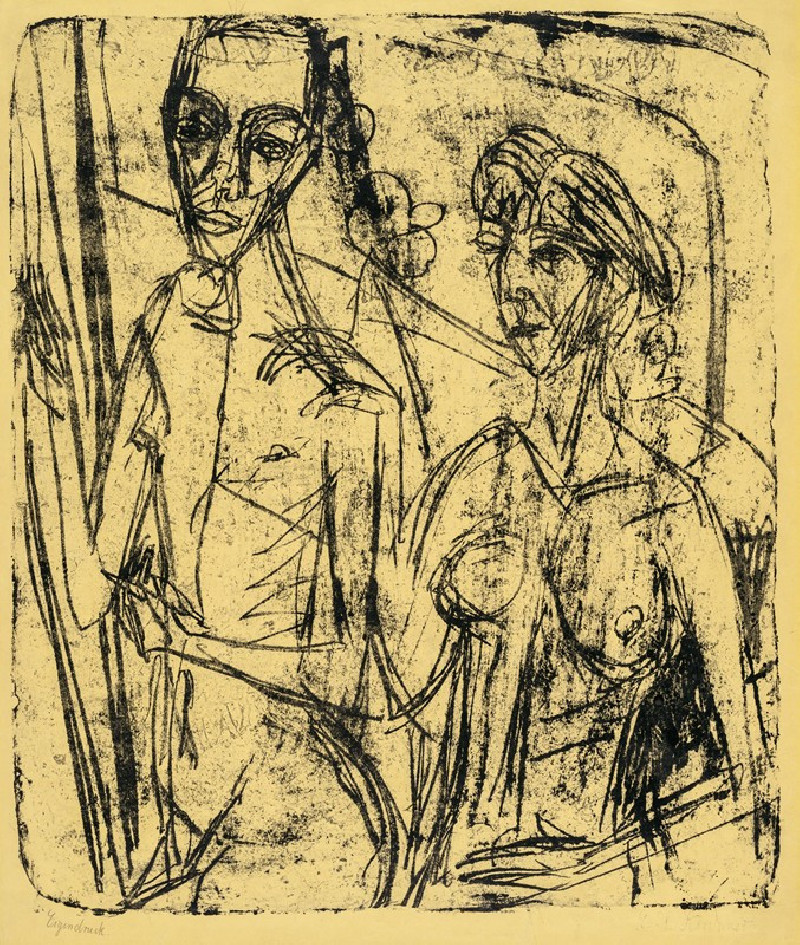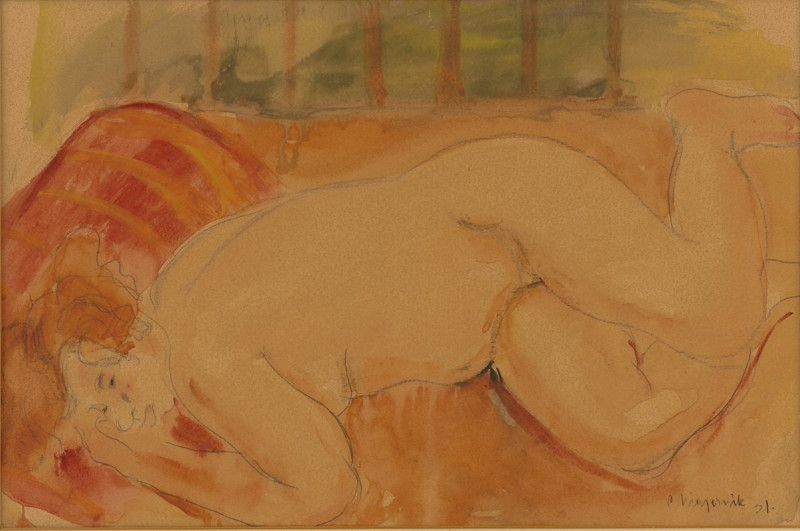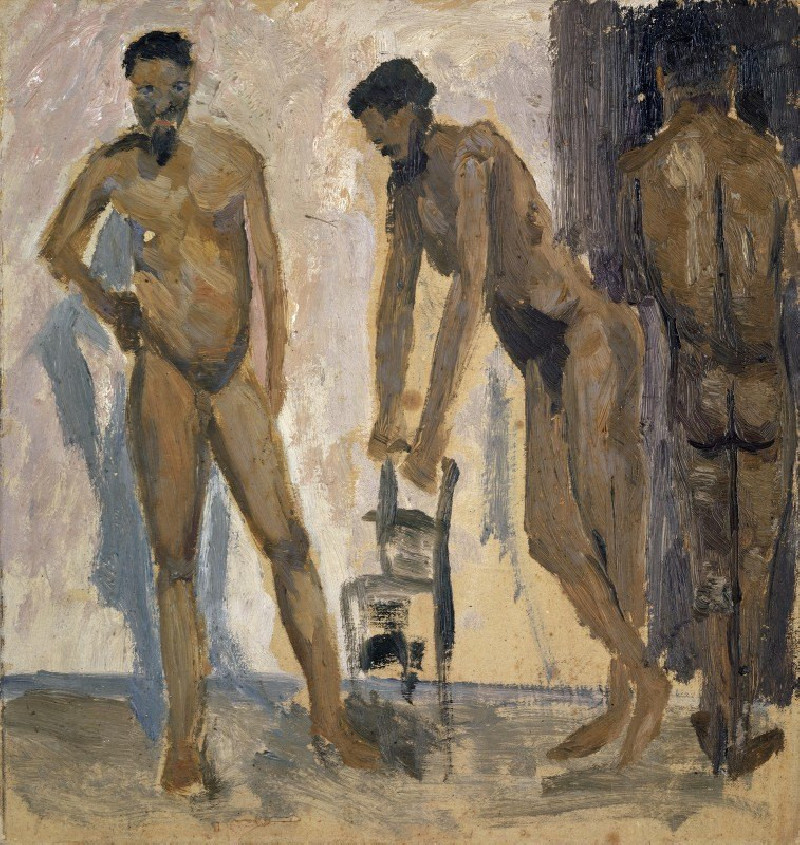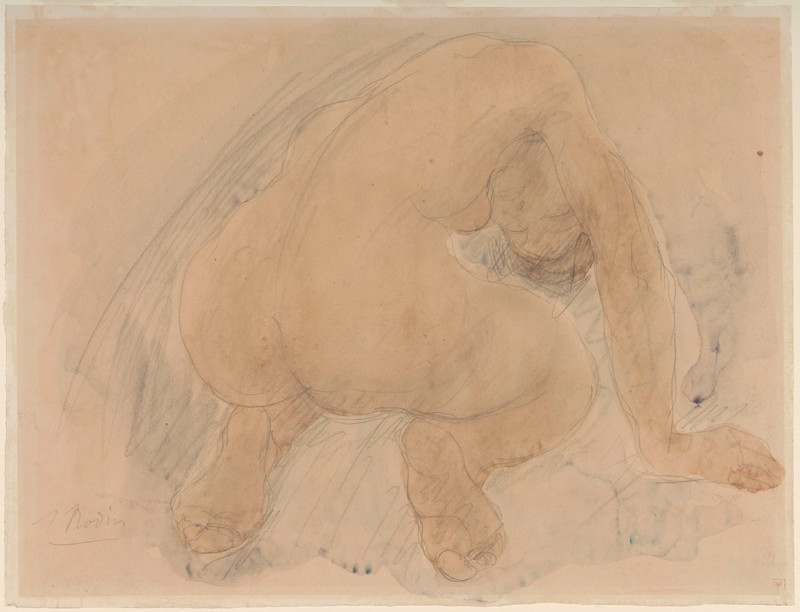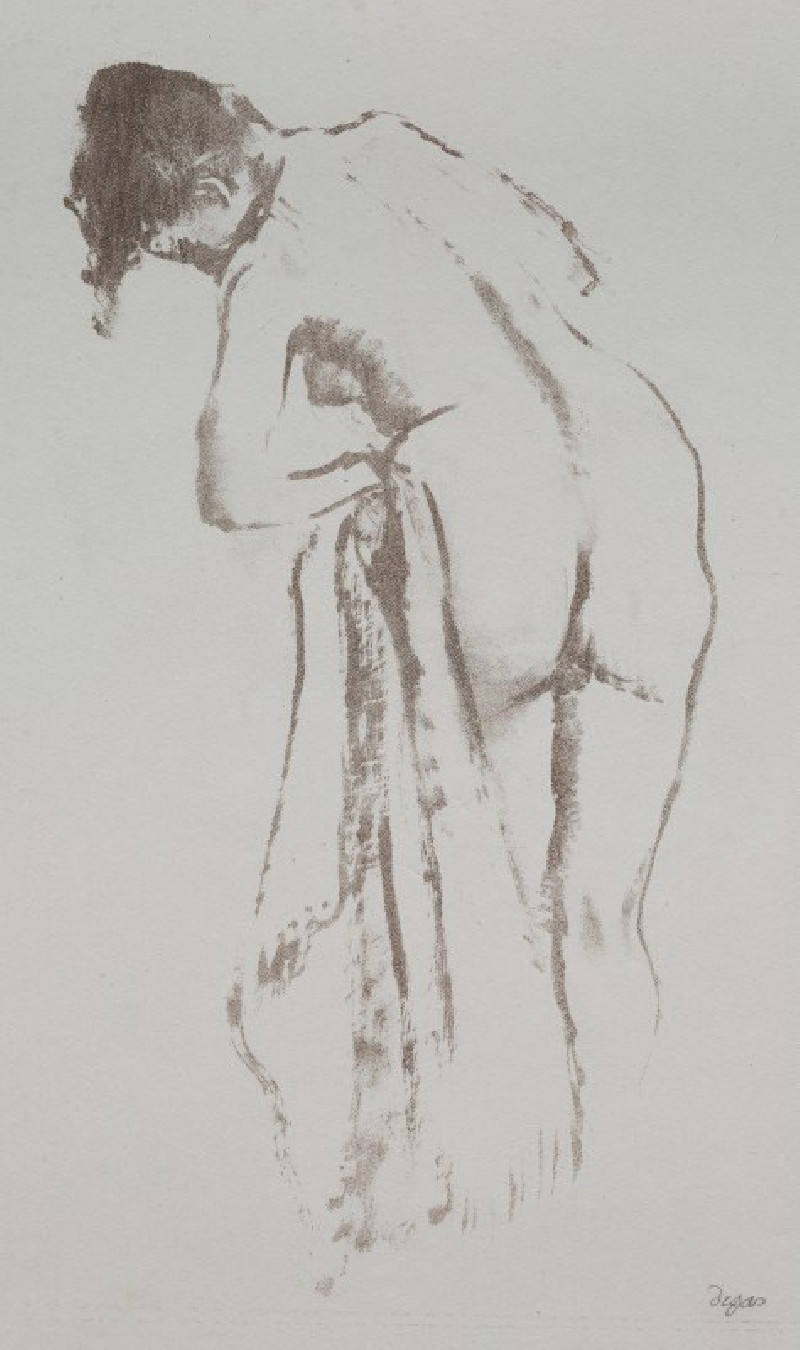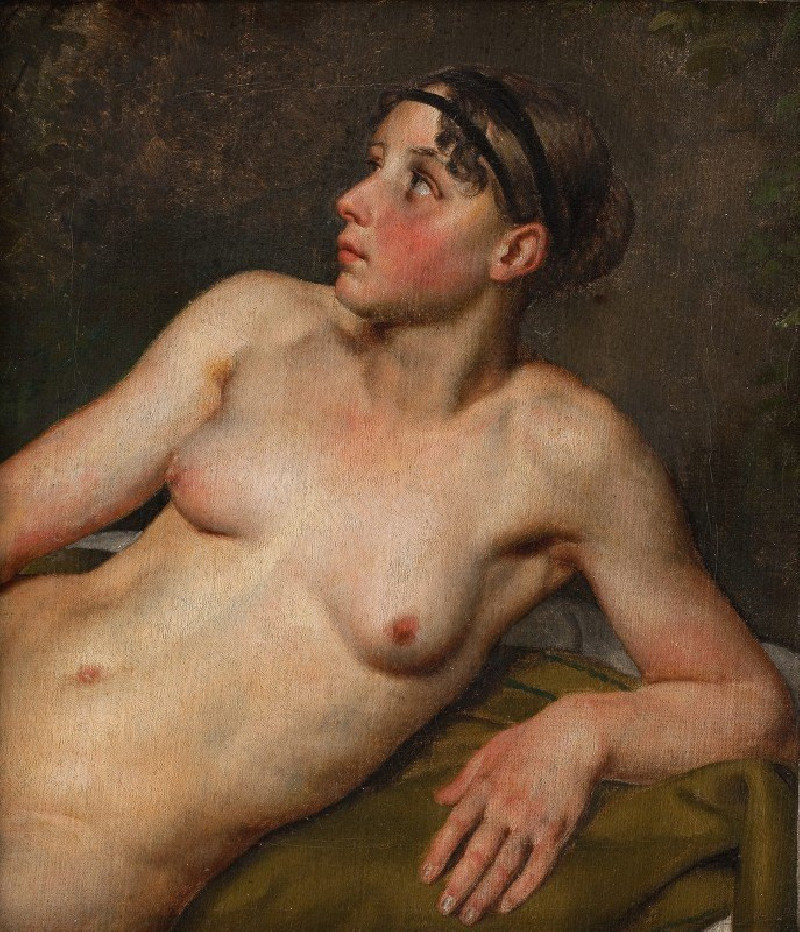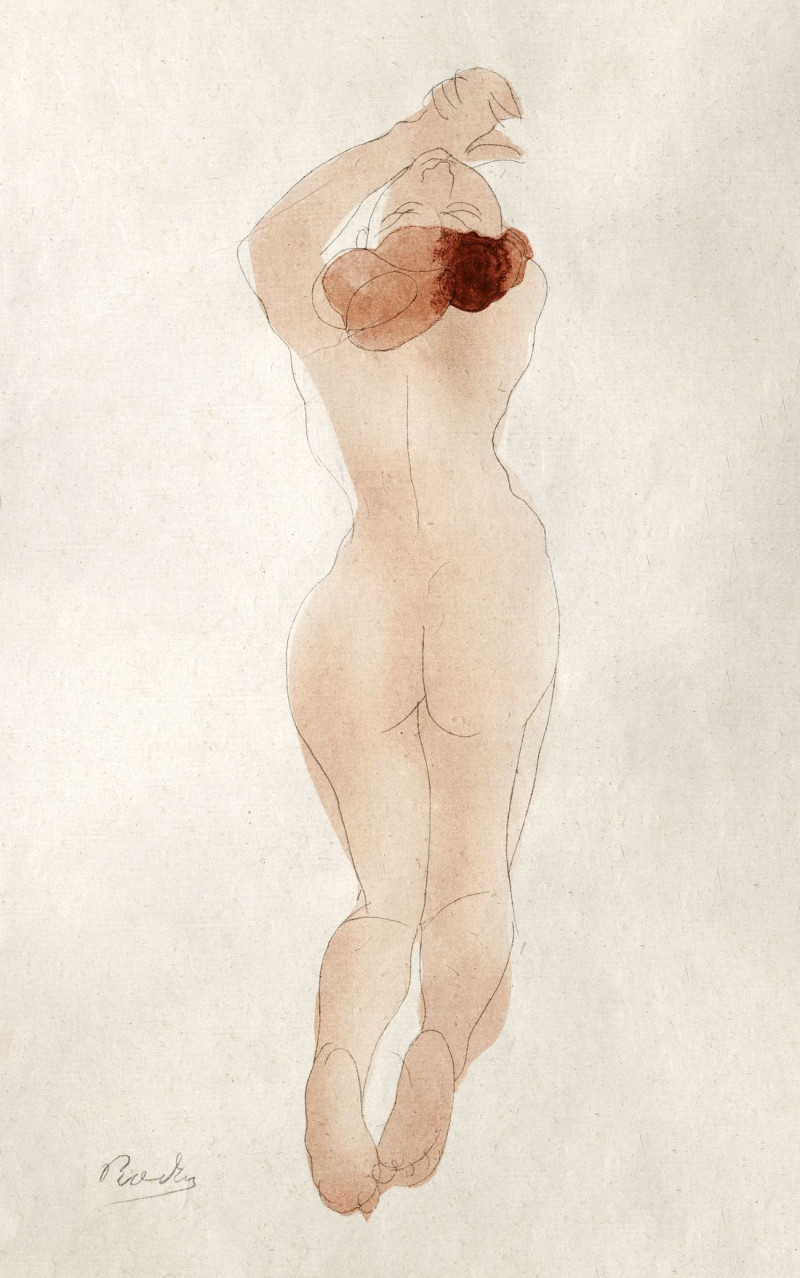Female Nude Before a Cabinet (1916)
Technique: Giclée quality print
Recommended by our customers
More about this artwork
Ernst Ludwig Kirchner's 1916 work, "Female Nude Before a Cabinet," is a compelling example of the dramatic simplicity and emotional expressiveness of Expressionism. This woodcut print illustrates a nude female figure bending forward, her posture expressing a mixture of repose and melancholy. The stark black and white contrasts, coupled with rough, angular lines, create a powerful visual tension that is characteristic of Kirchner's approach during this period.The background, while minimalist, features a structural element that resembles a cabinet, adding a spatial depth to the composition. What stands out in this piece is Kirchner's ability to convey profound emotion and a sense of intimacy through the abstraction of form and the boldness of his cut lines.
Delivery
Returns
Ernst Ludwig Kirchner (1880–1938) was one of the most important German Expressionist painters. He was a co-founder of Die Brücke, a group of German expressionist artists formed in Dresden in 1905. Die Brücke and Kirchner took inspiration from Vincent Van Gogh and Edvard Munch, as well as African and Oceanic art. They used woodblock printing as a medium to showcase their signature style: flat, unrealistic images with vivid colors. The recurring themes in Kirchner's artworks included exotic cultures, faraway landscapes, self-portraits, dancers and Berlin street life. His paintings and prints effectively portrayed non-European cultures despite the fact that he never traveled outside of Europe.

